7.62 NATO vs. .308: Is There a Difference?
January 21st, 2024
6 minute read
The idea for a short-action cartridge rivaling .30-06 performance has been around since before the Depression. But once the M1 Garand carried us through World War II, military circles took up the short-.30 banner with an experimental infantry round.
The T65 was essentially a .30-06 with a shorter 51mm rather than 63mm case. In a fit of brilliance, Winchester snatched the design for its hunting roster and in 1952 dubbed it the .308. Two years later the U.S. Army adopted the 7.62×51 cartridge and urged its acceptance by NATO, which complied in 1957.
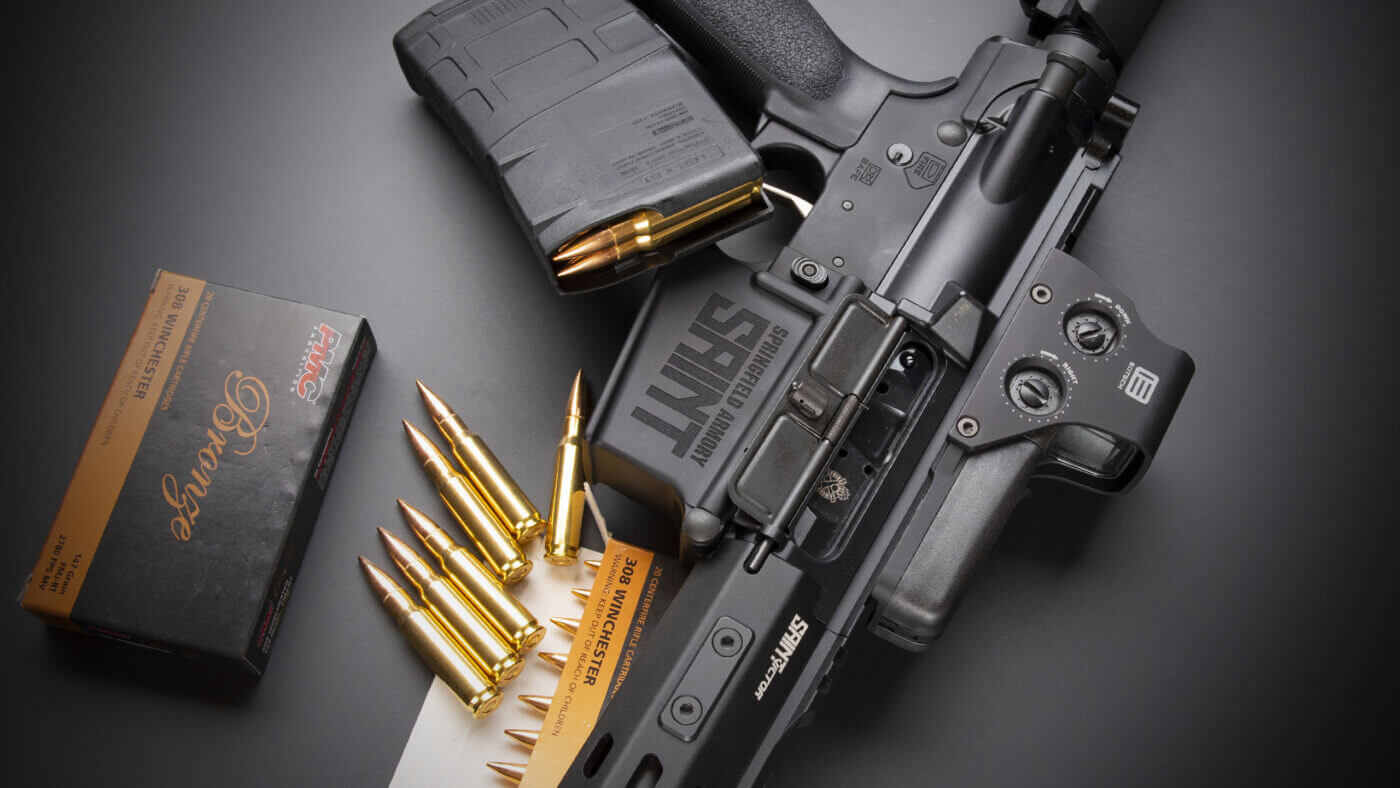
Its debut in our M14 infantry arm, then in rifles and machine guns abroad, ensured a future for the 7.62×51 NATO. When the M16 replaced the M14 in the Vietnam War during the 1960s (read my article comparing 5.56 NATO vs. .223 here), production of 7.62x51mm ammunition continued.
National Match loads fueled by 41.7 grains IMR 4895 kicked 174-gr. BTHP bullets to 2,548 fps. Tracer, frangible, armor-piercing and grenade-launching loads followed.
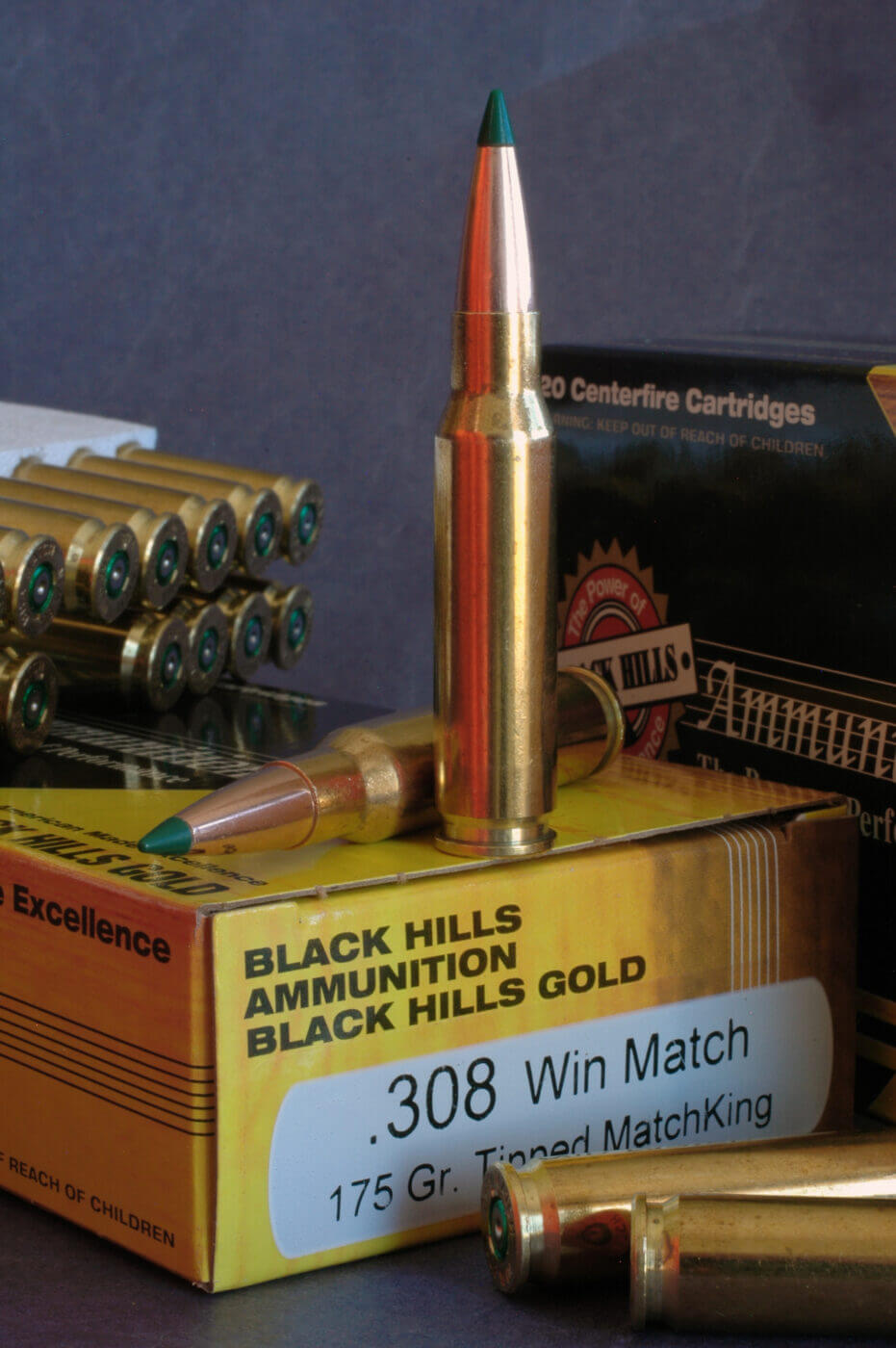
To hunters, infantry cartridges have all the cachet of beige filing cabinets. While the .308’s short stature, light weight, low case cost and function in self-loading guns initially served military interests, sportsmen of that day were more seduced by new belted magnums. Utility, like wisdom, can be an acquired taste.
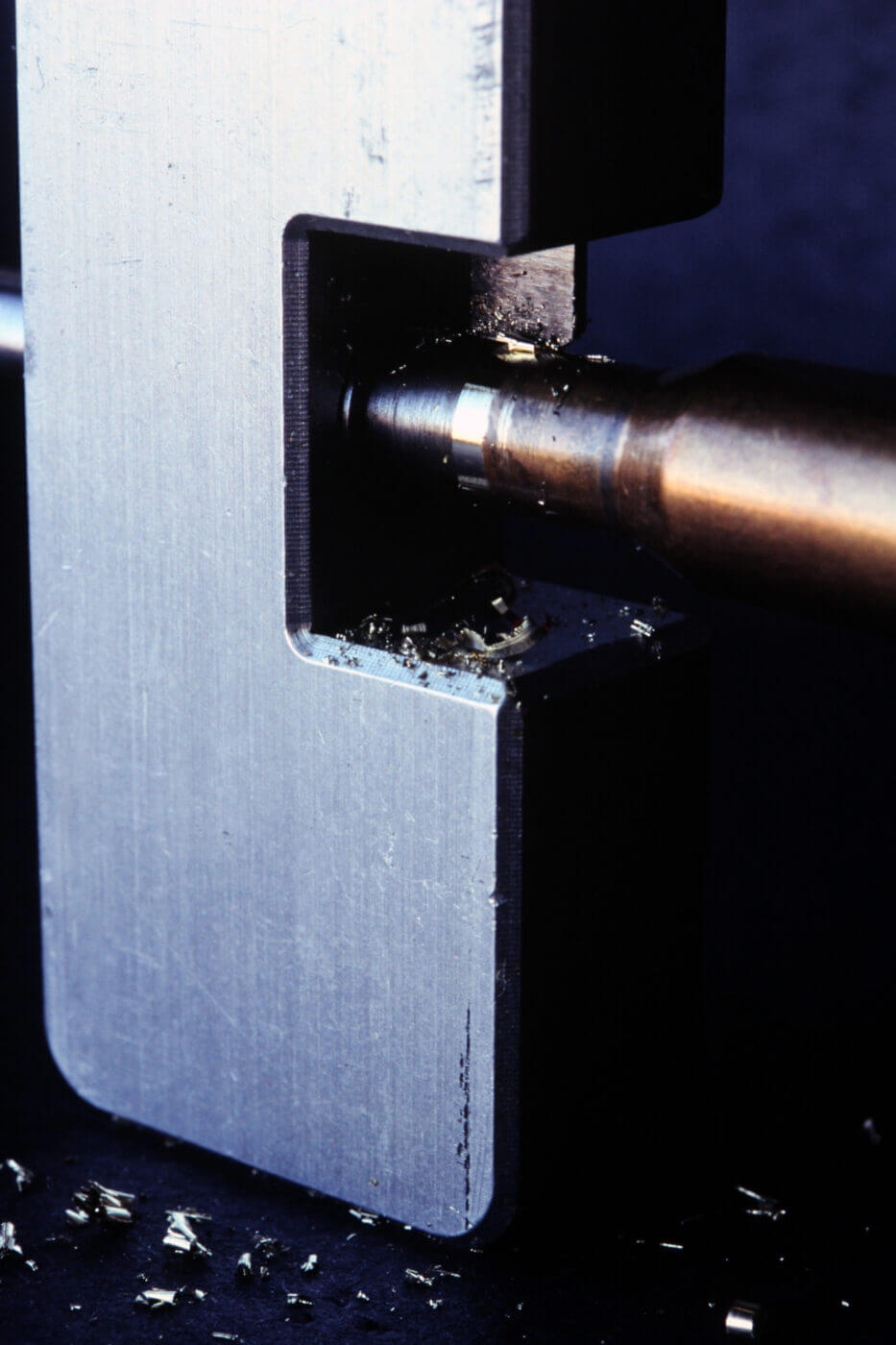
A Second Look
But the .308 soon earned plaudits afield. Commercial makers began to chamber bolt-action, lever-action, pump-action and autoloaders in the round.
The .308 case holds 20 percent less powder than a .30-06, and about 40 percent more than a .30-30. It has roughly half the capacity of a .300 Weatherby Magnum.
Traditional loads sent 150-gr. softpoints at 2,820 fps, 90 fps shy of listed speed for those bullets in a .30-06 but 190 fps faster than their exit from the old .300 Savage round.
Seth Swerzcek at Hornady tells me its top-selling .308 load is still the 150-gr. SST, albeit Superformance ammo with 165-gr. InterBonds at 2,840 fps brings more muscle.
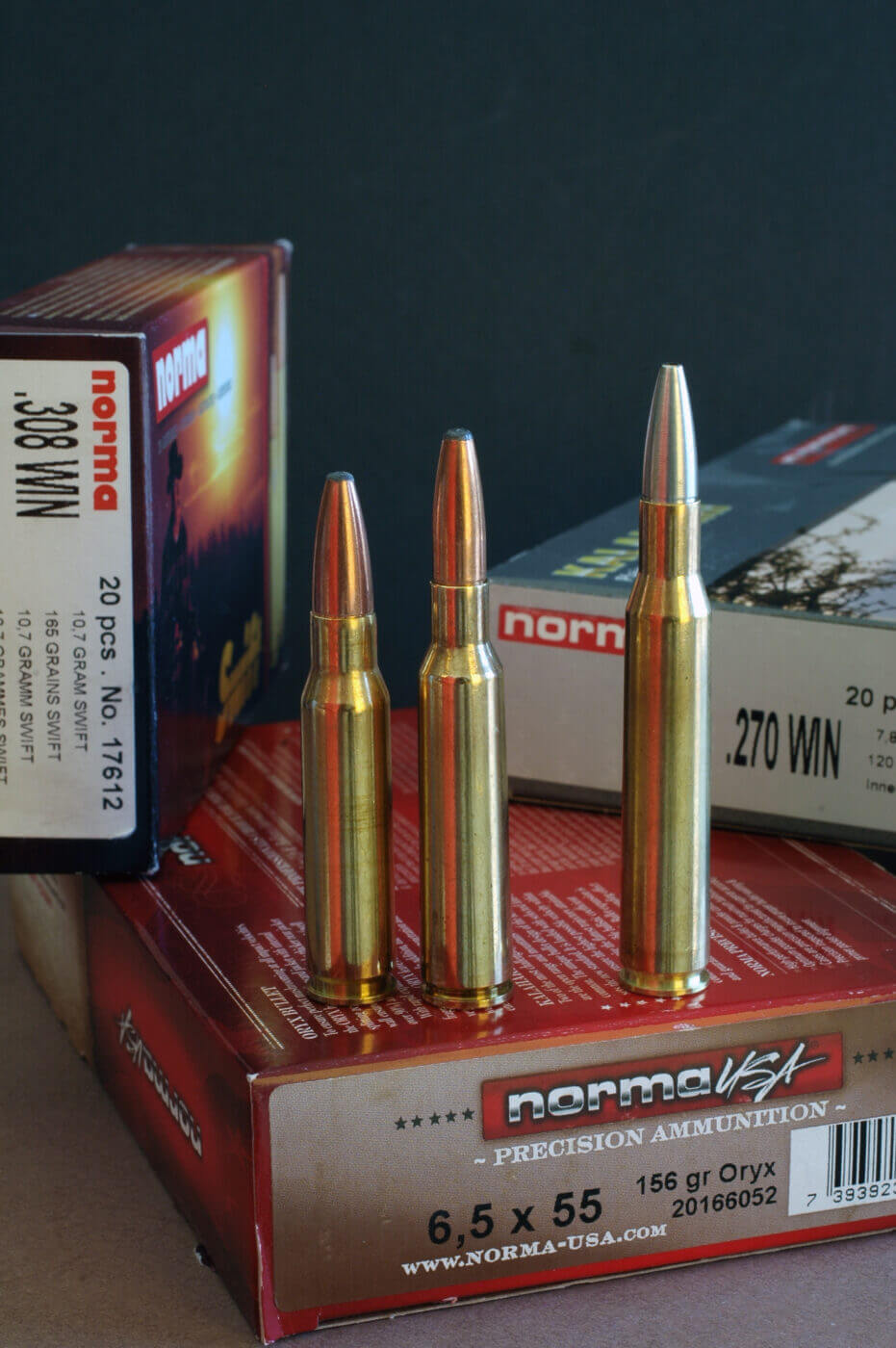
Bench Rest shooters embraced the .308. With it, Dave Hall drilled a .4612 knot to win the Sporter class at the 1967 National Matches. In ‘68, Ferris Pindell won with a .3594 group from his .308.
Meanwhile, the round was proving itself in military circles internationally as the 7.62×51 NATO.
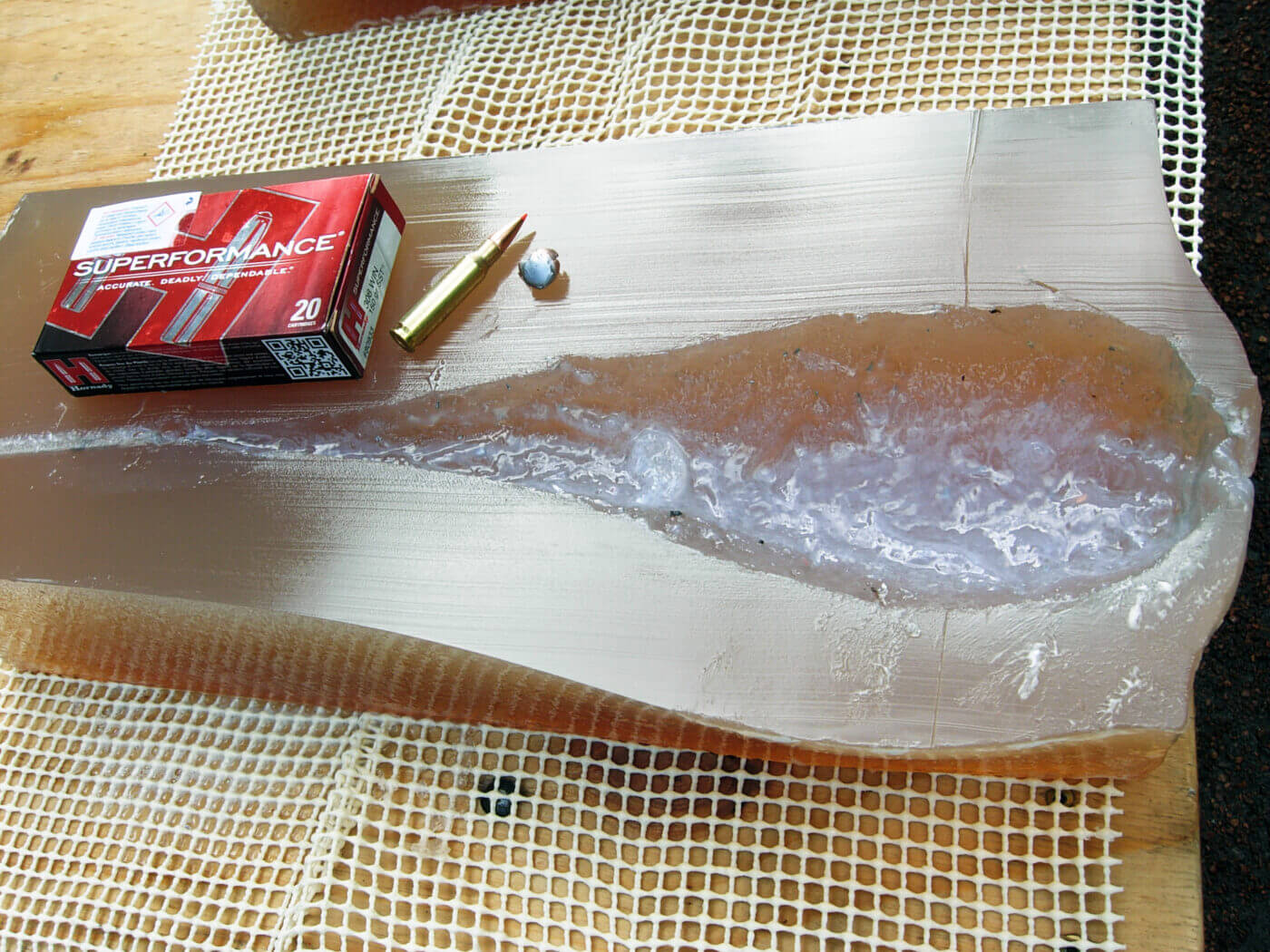
What’s the Difference?
One of the biggest questions when comparing the 7.62 vs. 308 is “what’s the difference?”
The cases are identical — same 2.015 length, 20-degree shoulder, .473 rim. Body and neck are the same. Cartridges are loaded to the same 2.800 overall length.
Of course, loads can differ. Military units and LE agencies may specify bullets of limited use to hunters, and port pressures to operate service rifles.
“We use the same brass and primers for commercial and service-contract ammo,” says Swerzcek. “Typically, Hornady recommends loads for a contract. Officials approve or tweak specs. We hew to them.”
Standards of both rounds are governed by SAAMI and its European equivalent, CIP.
“Wait!” you howl. Maximum average breech pressures differ, with the .308 having the higher range. Gunsmithing instructor Fred Zeglin notes different measuring methods can yield such disparities. Swerzcek agrees.
“The first 7.62×51 NATO pressures were retrieved by copper crusher. Current piezo-electric reads on .308 ammo are more precise and repeatable, often higher.”
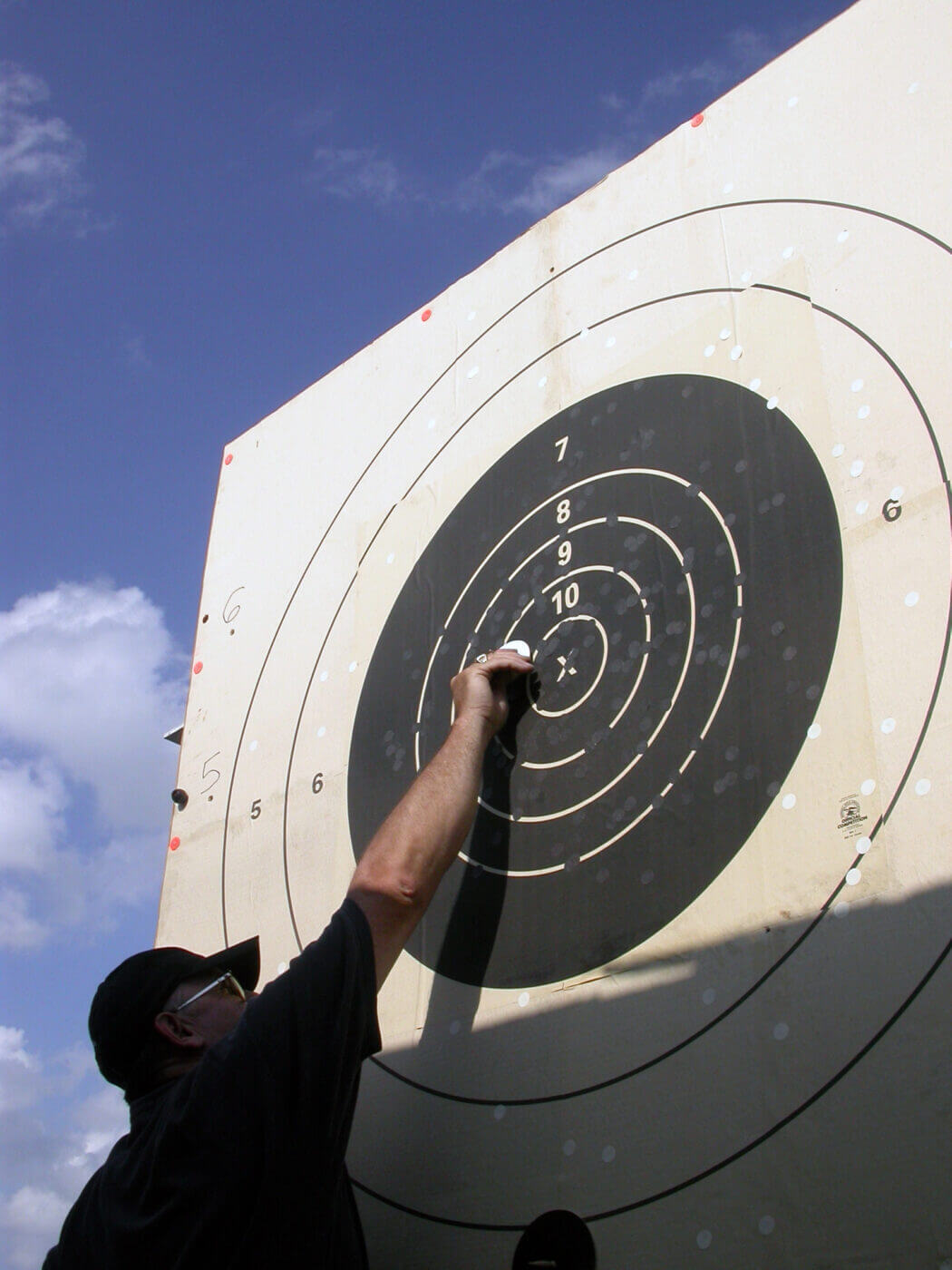
Jeff Hoffman at Black Hills Ammunition notes differences in measurement location. “Pressures for the 7.62×51 NATO may be taken at the case mouth instead of mid-case. We check production at both places, commonly seeing slightly lower values at the mouth.”
He also says velocities for the 7.62×51 NATO are often taken 78 feet from the muzzle, not SAAMI’s standard 15. “A small difference, but important if you’re loading thousands of rounds to exacting standards.”
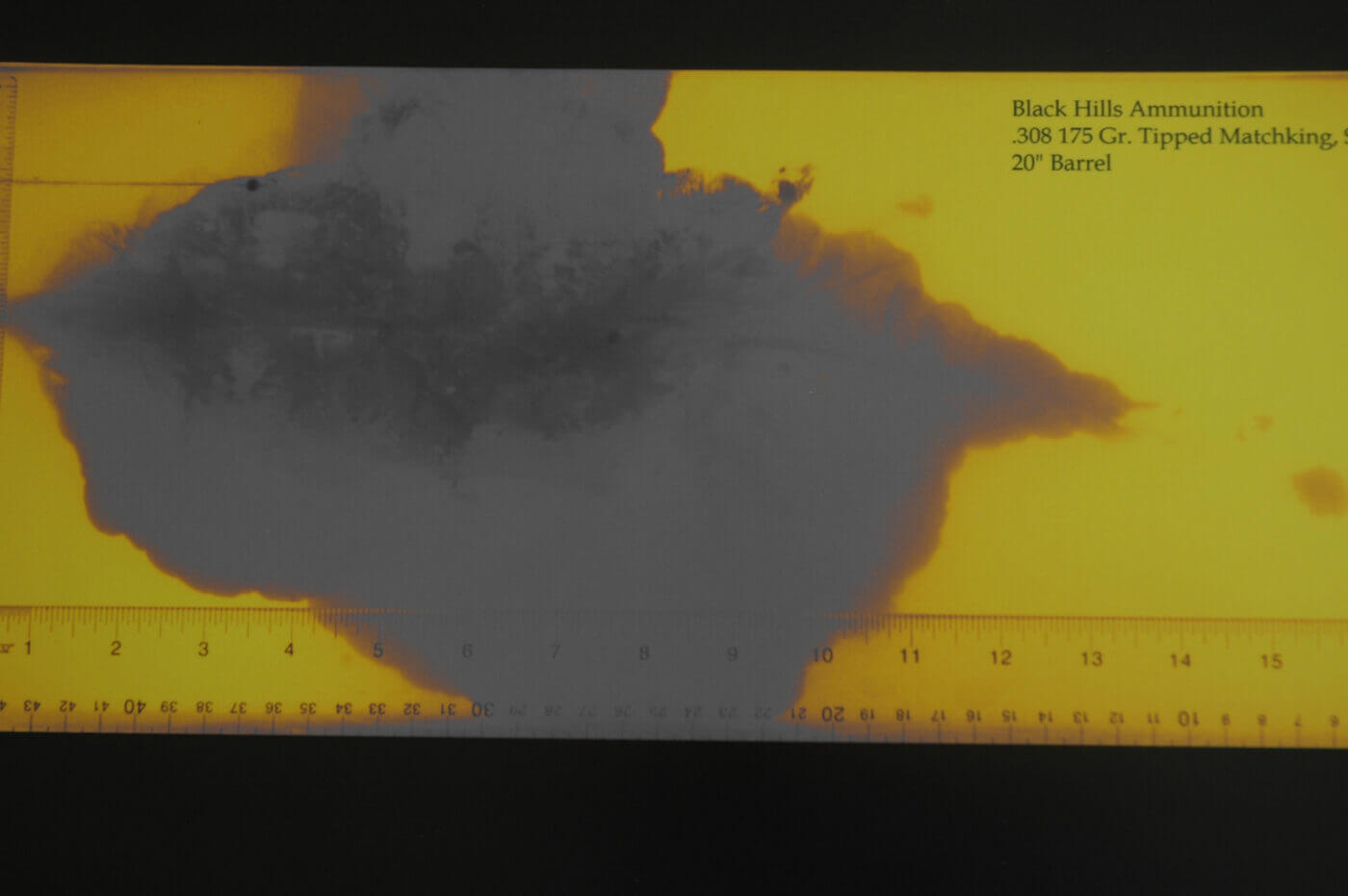
What about maximum horizontal range? It’s listed at 4,500 yards for the .308, and 5,500 for the 7.62×51. “Different bullets in the trials,” say ballisticians. At extreme range, ballistic coefficient rules.
SAAMI diagrams show a headspace measure of 1.630 to 1.640 for the .308. A Frankfurt Arsenal diagram indicates a range of 1.628 to 1.634 for the 7.62×51 NATO cartridge case, while JGS reamers are held to 1.630-.640 for the .308 and 7.62×51 NATO. Barrel-maker John Krieger tells me even his reamers with special-order throats hew to SAAMI headspace specs.
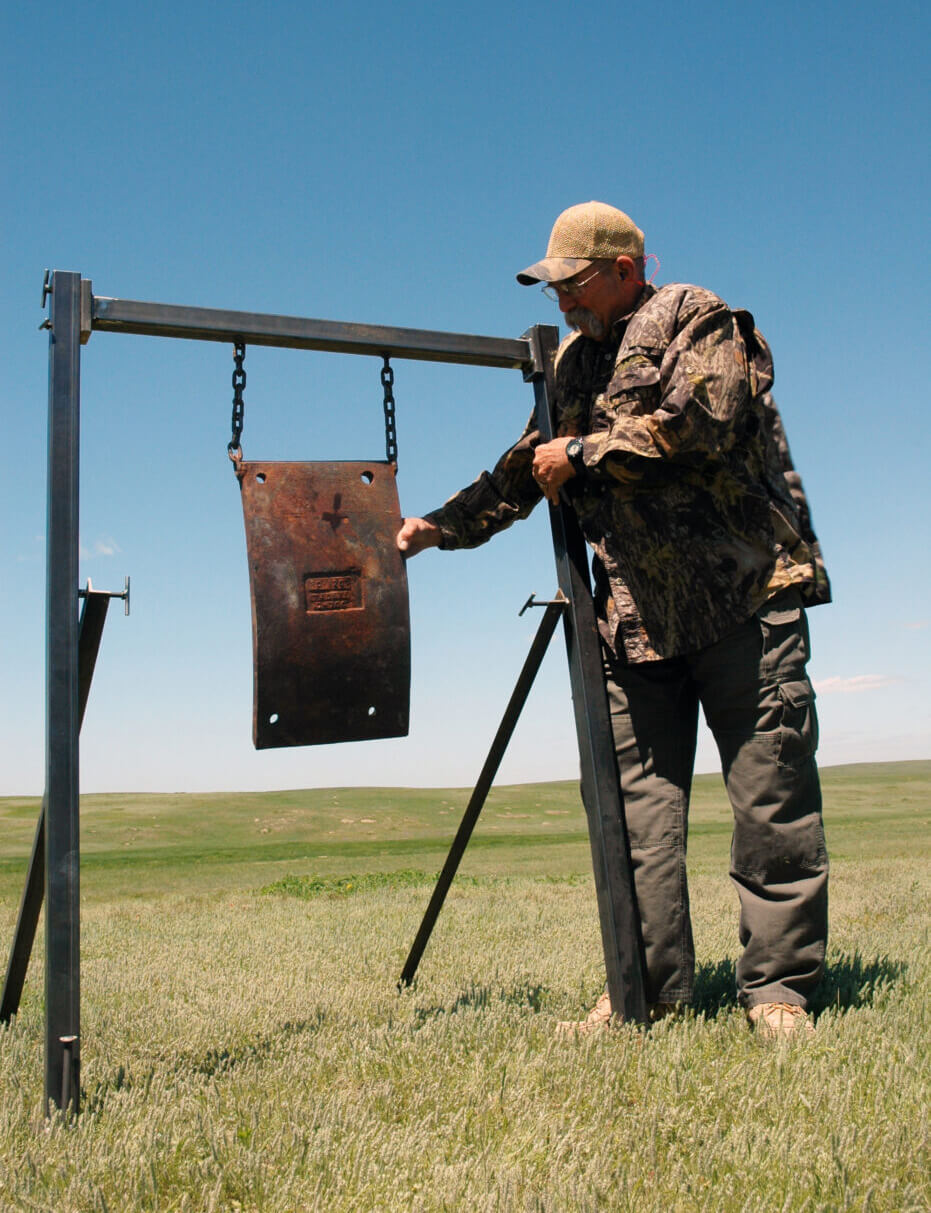
Freebore and leade angle are where .308 and 7.62×51 NATO chambers seem to differ. For .308s, JGS shows .900 freebore of .3100 diameter, with a 1-45 leade angle. Chambers in 7.62×51 NATO are cut with 1.355 of 3.095 freebore, a 5-40 leade angle. Government diagrams confirm that steep leade.
A New Twist?
A common twist for both cartridges is the original 1-in-12. For the leggy bullets popular now, faster spin is common. Krieger uses and has rifled barrels 1-in-11 for high-power competition, with bullets as heavy (long) as 220-gr. MatchKings.
Dave Tooley’s Bench Rest experience nudges him toward modest spin rates. Having chambered more than 7,000 barrels, he likes 1-in-12 twist even for long-range bullets. “An exceptional 1-in-14 Hart barrel held half-minute accuracy with flat-base 187s at 1,000 yards.”
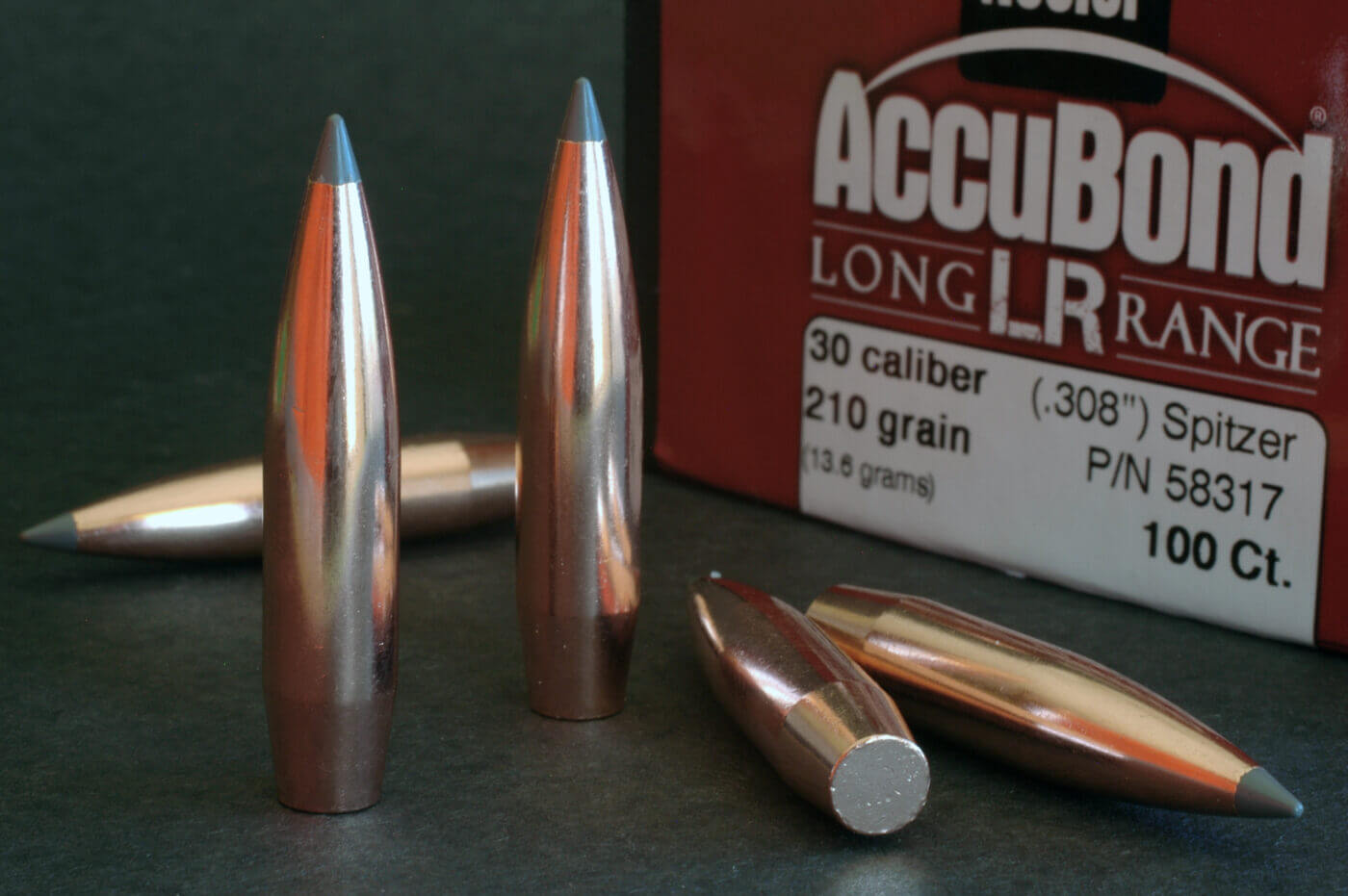
Hornady ballistician Scott Javins agrees with Tooley that targets tell the story. But he understands shooters choosing sharper spin.
“They heed caveats from bullet-makers, and gyroscopic stability values.” GS, he explains, responds dramatically to higher spin rates. “A 168-gr. ELD Match at 2,546 fps from a .308 barrel with 1-in-11¼ rifling spins at 162,960 rpm. GS: 2.08. The same bullet sent at 2,528 fps from a 1-in-8 bore spins at 223,830 rpm. GS: 4.11.”
He adds that GS disparities may not show up on targets or game at ordinary ranges.
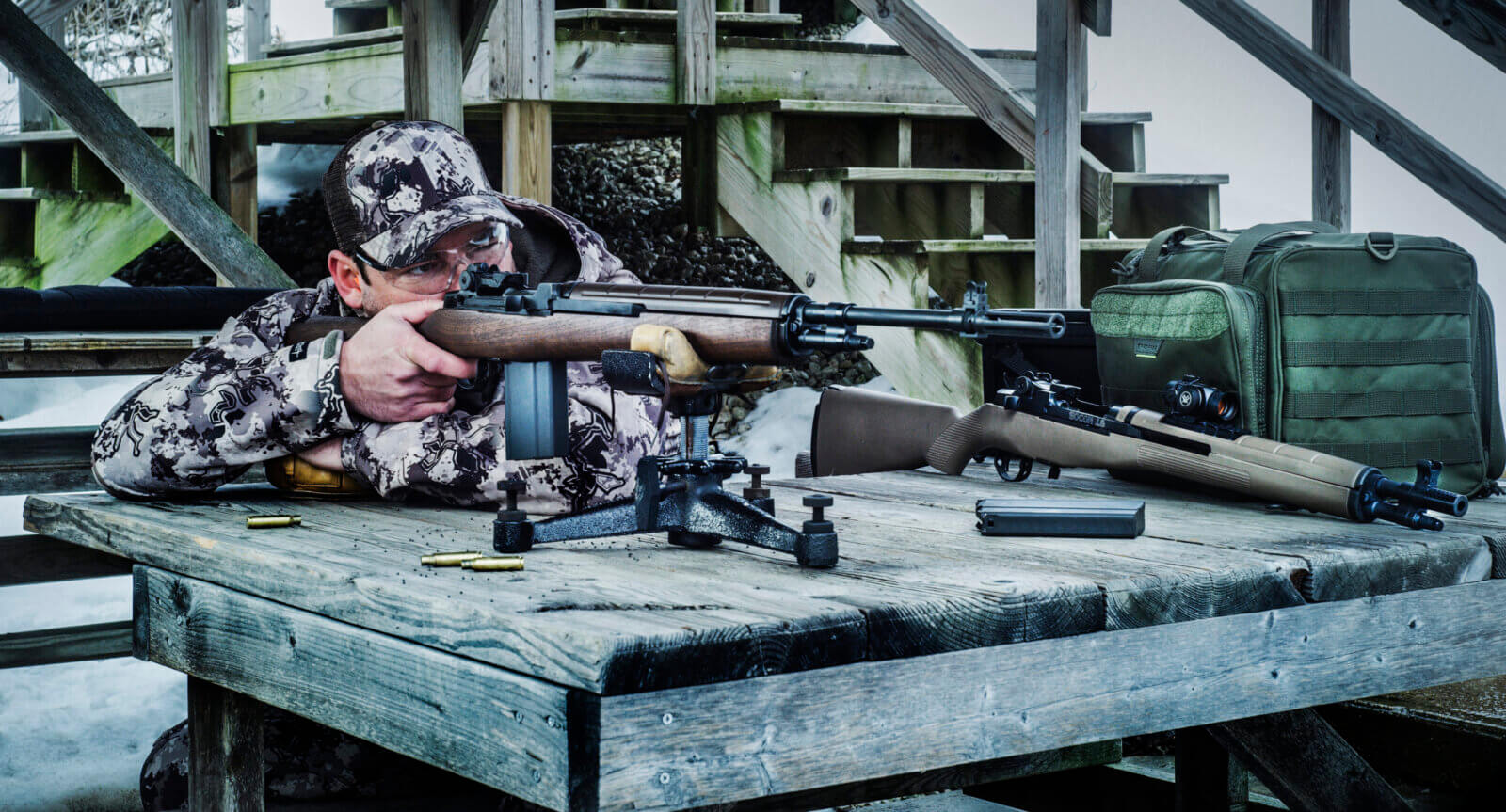
Which Is Better: 7.62 or .308?
While the 7.62×51 NATO designation remains common in military circles and abroad, it’s all but gone from commercial loads stateside with just a few offerings here and there. The .308, however, dominates ammo rosters, with 79 loads from five U.S. ammo makers. Federal catalogs 24 loads, Hornady 17. Even Norma of Sweden has seven loads, more than for any other cartridge in its line. No centerfire round is chambered in more rifles worldwide.
What’s the Bottom Line?
All modern .308 rifles can chamber and shoot modern .308 and 7.62 NATO ammunition without any problems, such as the SAINT Victor .308 rifles. The 7.62 NATO M1A can also safely fire both rounds.
If you plan on using a surplus rifle chambered in either .308 Win or 7.62 NATO, you should have the gun’s headspace checked by a professional to ensure you can safely shoot .308 ammunition. You can also check this on your own with quality Go-NoGo headspace gauges.
Editor’s Note: Please be sure to check out The Armory Life Forum, where you can comment about our daily articles, as well as just talk guns and gear. Click the “Go To Forum Thread” link below to jump in and discuss this article and much more!
Join the Discussion
Featured in this article
Continue Reading
Did you enjoy this article?

 809
809







